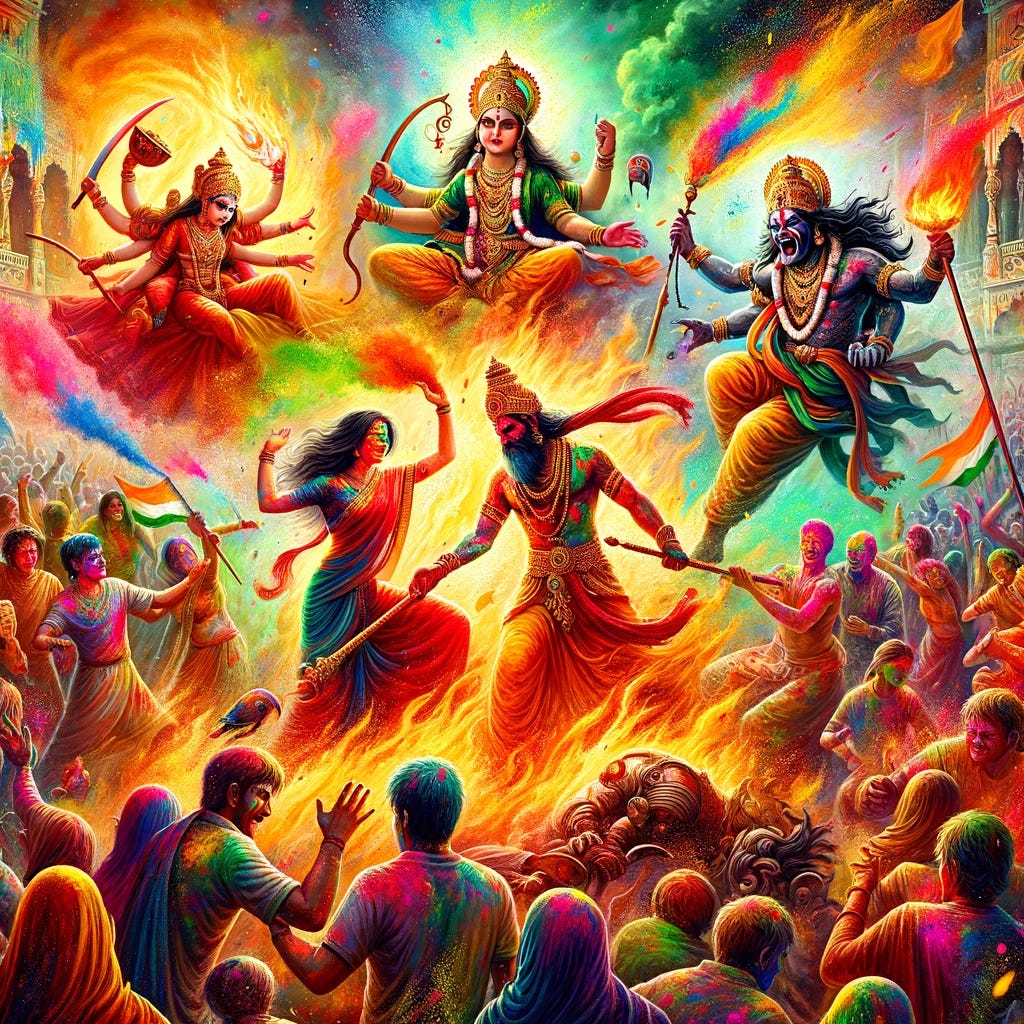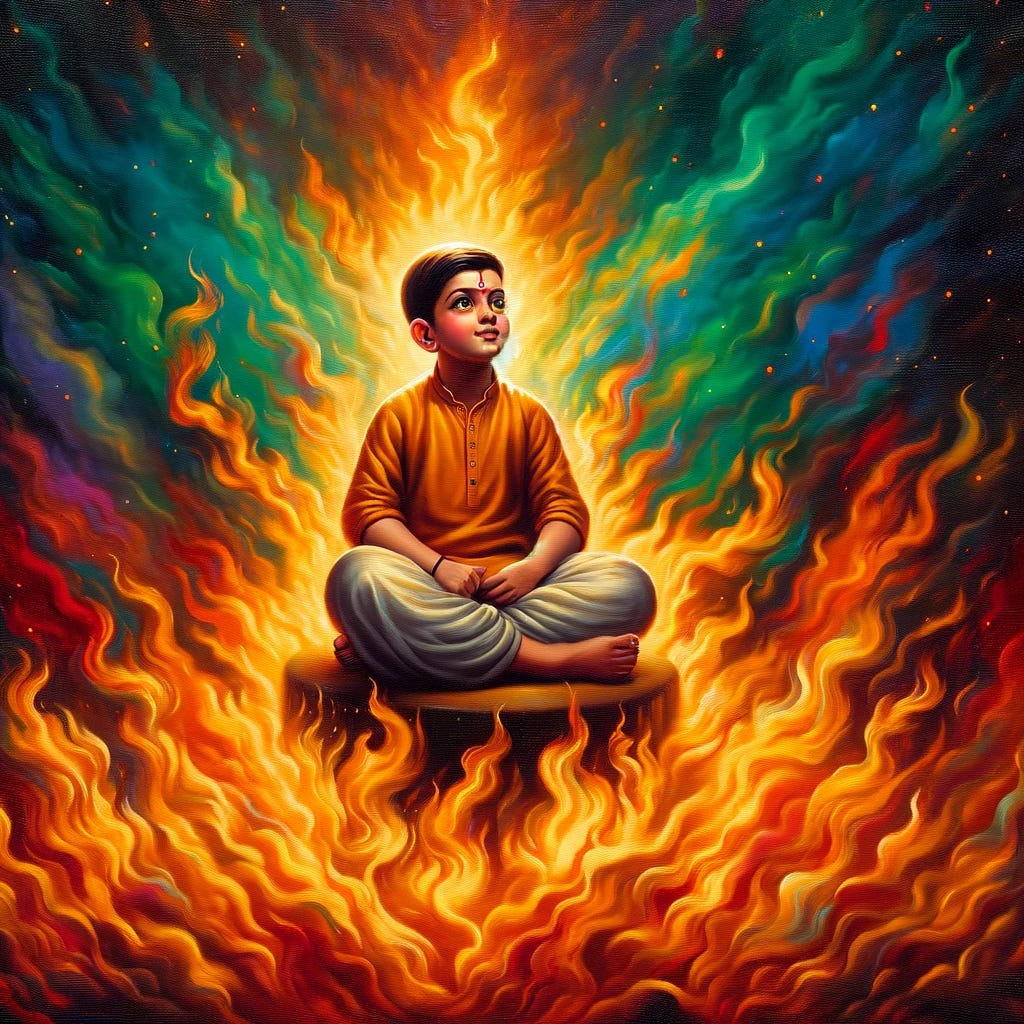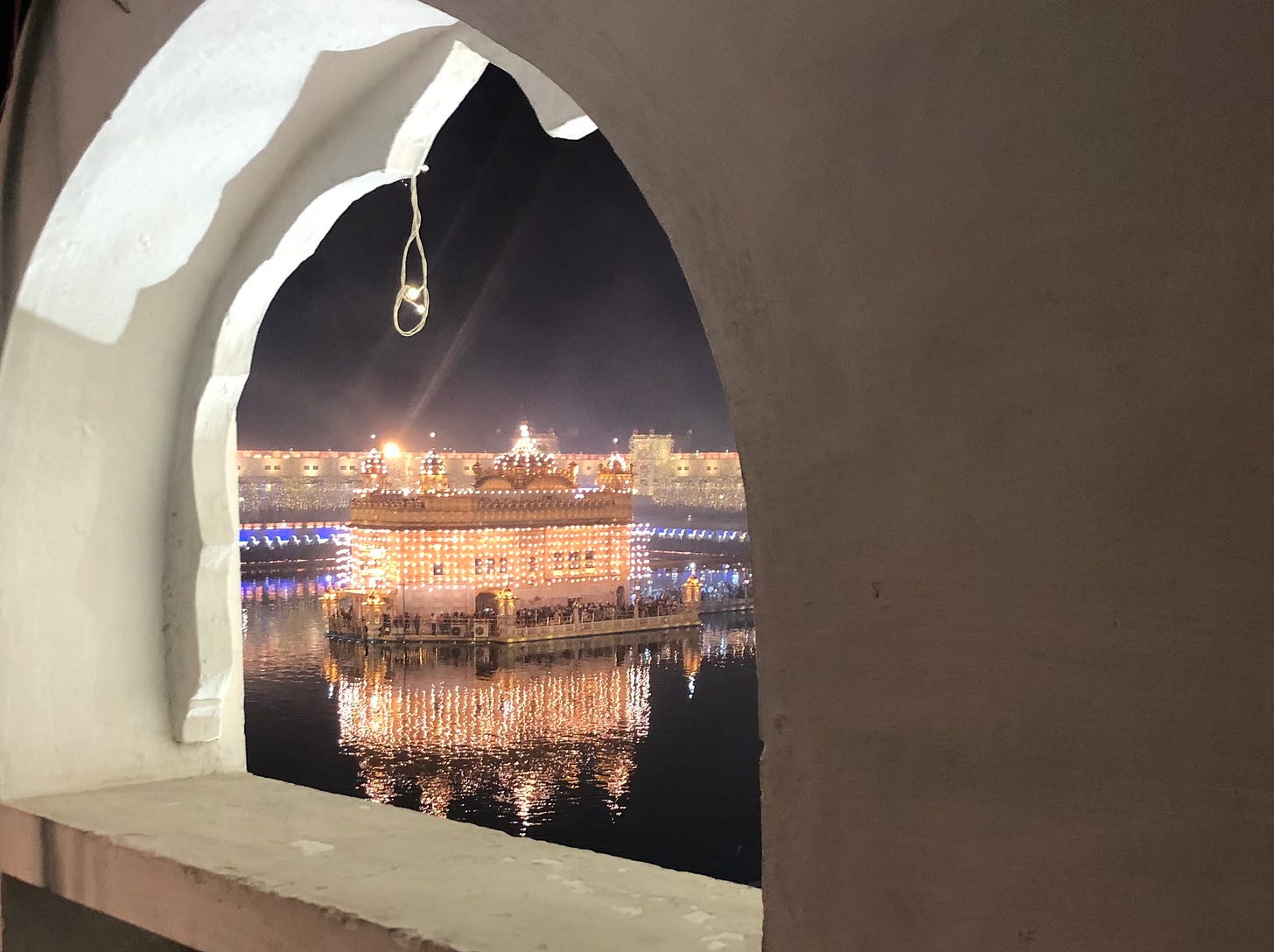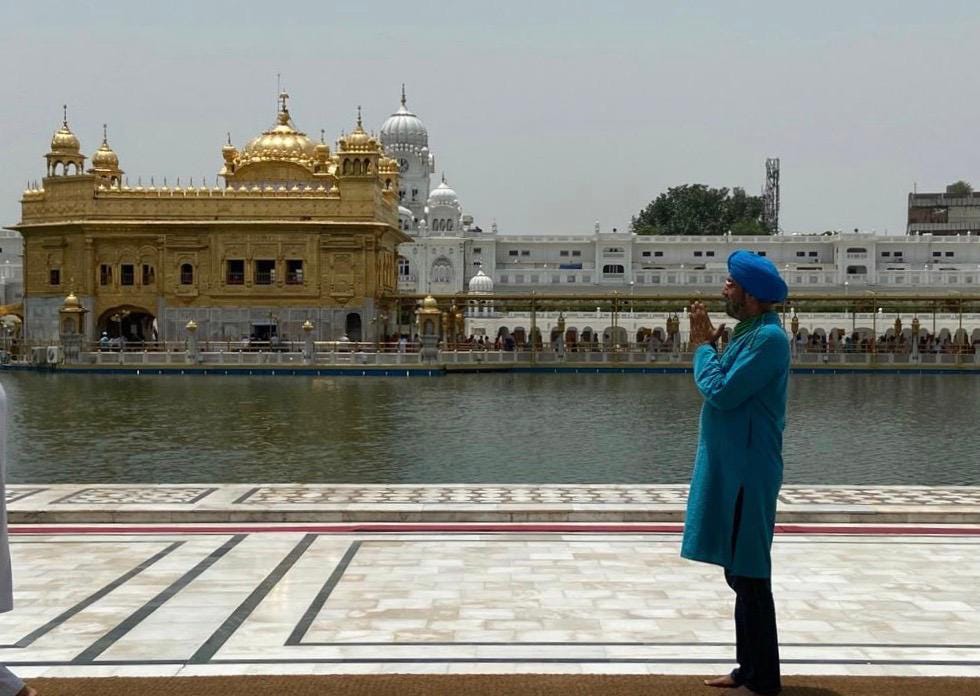Happy Holi! The Story of Bhagat Prahlad in Sri Guru Granth Sahib
The Vibrant Canvas of Holi: Celebrating Unity, Faith, and the Triumph of Good.
The Vibrant Canvas of Holi: Celebrating Unity, Faith, and the Triumph of Good
In the kaleidoscope of Indian festivals, Holi— which we celebrate today— holds a unique place, painting the lives of people with the hues of joy, unity, and spiritual awakening. Celebrated with enthusiasm across the diverse landscape of India, particularly in the North, including Punjab, Holi marks the victory of good over evil, light over darkness, and spring over winter. It's a time when communities come together, forgetting their differences, to revel in the shared joy of life's colors. However, it is lesser-known that the tale of Bhagat Prahlad and his father, the malevolent demon king Hiranyakashipu, is vividly recounted in the Sri Guru Granth Sahib, which we humbly aim to explore in the subsequent sections of this piece.
Vibrant Traditions: Celebrating Holi in North India
In the heart of North India, Holi unfolds as a spectacle of unfettered joy, bringing communities together in a vibrant celebration of life, renewal, and the triumph of good over evil. As winter gives way to spring, towns and villages across the region are blanketed in a riot of colors, with the air filled with laughter, music, and the spirit of camaraderie. The festivities begin the night before Holi with the lighting of bonfires, symbolizing the burning of the evil Holika and the protection of the devout Prahlad, reinforcing the festival's underlying message of faith and redemption.
Of colours, water balloons, and pichkaris
The morning of Holi sees a dramatic transformation, as people of all ages step out of their homes armed with colors, water balloons, and pichkaris (water guns), ready to drench each other in hues of red, green, yellow, and blue. The social norms of hierarchy and formality dissolve into the playful chaos, where everyone is fair game, from the youngest children to the elderly, symbolizing a return to innocence and the joy of existence. Traditional sweets like gujiya, malpuas, and bhang-infused drinks add to the festive mood, making Holi a time for indulgence and merry-making.
Holi of Braj— Devotion to Lord Krishna
Amidst the revelry, the traditional songs and dances add a cultural depth to the celebration. In many parts of North India, especially in regions like Braj in Uttar Pradesh, Holi is also a time for theatrical reenactments of scenes from Lord Krishna's life, celebrating his playful and loving spirit. This cultural dimension adds layers of meaning to the festival, making it a rich tapestry of tradition, spirituality, and communal harmony.
Hola Mohalla: The Sikh Festival of Valour
Hola Mohalla, celebrated with grandeur at Anandpur Sahib, stands as a distinctive festival of the Sikh community, marking the martial tradition and valor of the Khalsa Panth. Instituted by Sri Guru Gobind Singh Ji, this festival, occurring a day after Holi, transforms the town into a vibrant arena showcasing the martial prowess and spiritual ethos of the Sikhs. Nihangs, in their traditional regalia, display breathtaking feats of horse riding, sword fighting, and archery, echoing the valorous spirit of their forebears. Amidst the recitations of Gurbani and the sounds of martial arts, Hola Mohalla reiterates the core Sikh tenets of courage, discipline, and brotherhood. This festival not only commemorates the physical strength and bravery of the Sikh warriors but also celebrates the spiritual resilience and unity of the Sikh community, making it a profound cultural and religious observance in Sikhism.
The Eternal Tale of Bhagat Prahlad: A Beacon of Devotion
Central to the festival's celebration is the legendary saga of Bhagat Prahlad, whose unwavering devotion to Lord Vishnu stands as a testament to the power of faith against the greatest odds. Prahlad, the son of the demon king Hiranyakashipu, defied his father's tyrannical denial of Vishnu's existence, embodying an unshakeable belief that was to be tested through fire and wrath.
Holika's Deceit and the Triumph of Faith
Hiranyakashipu's schemes to end Prahlad's life culminated in the plot with Holika, Prahlad's aunt, blessed with the boon to enter fire unscathed. The plan to burn Prahlad alive, however, turned the boon on its head. Holika's immunity failed her, for it could not shield her malicious intent. Amidst the flames, it was Prahlad's devotion that emerged victorious, untouched and unharmed, a miracle that would forever symbolize the festival of Holi.
The Wrath of Hiranyakashipu and the Divine Intervention
The tale reaches its crescendo with Hiranyakashipu's challenge to Prahlad's faith, questioning the omnipresence of Lord Vishnu. In his divine will, Vishnu manifested as Narasimha, at the threshold of day and night, neither inside nor outside, to vanquish the arrogance of Hiranyakashipu without breaching the boon of invincibility granted to him. This act of divine intervention highlights the ultimate victory of divine love and morality over conceit and evil.
Bhagat Prahlad's Legacy in Sri Guru Granth Sahib
The narrative of Bhagat Prahlad extends beyond the confines of Hindu scriptures, garnering deep respect within the teachings of Sikhism, as chronicled in the Sri Guru Granth Sahib. Here, specific verses by the third Sikh Guru, Guru Amar Das Ji, and Bhagat Kabir, elucidated in Punjabi in the two short videos below, pay homage to Prahlad's unwavering faith and devotion. This story stands as a beacon, inspiring believers to maintain steadfast belief in the face of adversity—a principle profoundly embedded within the Sikh ethos.
[Double click to view-hear the short video]
[Double click to view-hear the short video, capturing the other verses]
Holi: A Universal Symphony of Peace and Joy
As we embrace the essence of Holi, let us remember that it is more than just a festival of colors. It is a celebration of life's vibrant spectrum, encouraging us to live fully, love deeply, and coexist peacefully. The story of Bhagat Prahlad and the festival's rich cultural tapestry remind us to cherish the values of courage, faith, and unity, painting our lives with the colors of harmony and happiness.
In conclusion, as we spread the colors of Holi, let it be a reminder of our shared humanity, the triumph of love over hatred, and the joy of a life lived in vivid color. Let the festival inspire us to build bridges of understanding and peace, making the world a more vibrant and compassionate place for generations to come.
This piece, enriched with the profound tale of Bhagat Prahlad, seeks to illuminate the deeper meaning of Holi, inviting us to reflect on its timeless lessons and celebrate the festival with a renewed sense of purpose and joy. In case you find some value in this article, do return to view the videos above— where specific verses of the third Sikh Guru, Sri Guru Amar Das ji and Bhagat Kabir are referred to and elucidated in Punjabi.
May also like to share among devotees and readers, who you feel would like to hear, read or view.







